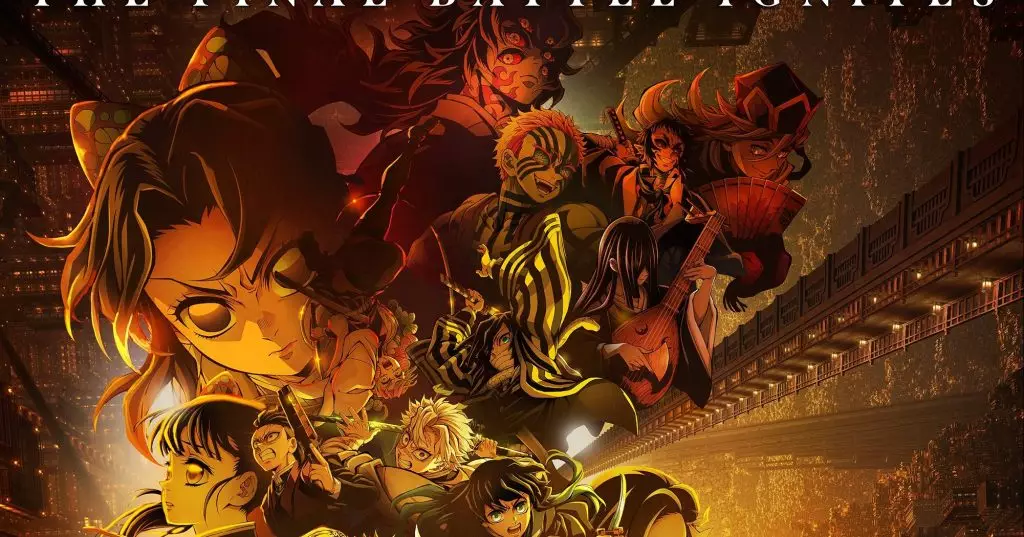In an era where Hollywood traditionally dominates the box office, a surprising challenger has emerged—Japanese anime. This cultural phenomenon is no longer confined to niche audiences; it’s disrupting the status quo with record-breaking box office figures and overwhelming presales. The latest example? “Demon Slayer: Infinity Castle,” which is on a trajectory to challenge established cinematic giants in the U.S. market. This shift demands attention, not just as a passing trend but as a testament to evolving consumer tastes and the shifting power dynamics in worldwide entertainment.
Anime’s meteoric rise reveals a significant failure of Hollywood to fully capture diverse global audiences. While blockbuster franchises continue to chase tired formulas, anime offers a fresh narrative voice infused with cultural authenticity, artistry, and fervent fan engagement. Investing in localized storytelling, instead of plain remakes or sequels, could be a lesson Hollywood sorely needs. The fact that “Infinity Castle” is already pulling near $10 million in presales—without a wide release—demonstrates just how ravenous American audiences are for this kind of content. It’s a clear signal that the industry’s old playbook is losing its effectiveness because audiences crave more genuine and culturally rich experiences, which anime delivers in droves.
Fan Engagement and Market Strategy: A New Paradigm
The early and aggressive presales for “Demon Slayer: Infinity Castle” underscore a vital truth: dedicated fans now set the tone for box office performance. This film’s pre-release momentum exceeds that of previous anime hits like “Jujutsu Kaisen 0” and “Mugen Train,” which both posted remarkable openings. These figures aren’t just about initial appeal—they reflect a passionate, highly engaged audience eager to support the franchise. The phenomenon exposes Hollywood’s complacency in understanding fan loyalty; animated franchises built on dedicated global communities can outperform traditional blockbuster marketing strategies with targeted hype.
Moreover, the mechanics of anime distribution highlight an unconventional strategy—early screenings in specialized formats like IMAX and exclusive tiers, which effectively create buzz and build anticipation. Hollywood should take note: fostering a close connection with core fans through early access, quality content, and cultural authenticity is a formula that produces sustainable gains. The failure to recognize this shift means Hollywood risks alienating international markets that crave storytelling rooted in cultural specificity and animated artistry.
The International Market: A Demographic Shift
While Hollywood relies heavily on domestic performance and franchise fatigue, anime is setting records internationally, especially in Japan and Southeast Asia. “Infinity Castle” already boasts nearly $193 million globally, with 75% derived from Japan—a testament to the genre’s entrenched cultural value. The opening in Southeast Asian regions shattered records, surpassing even “Frozen II” as the largest animated debut there, which underscores how anime’s appeal crosses cultural borders to resonate with diverse audiences.
This international dominance signals an urgent need for Hollywood to reconsider its approach to globalization. The entertainment industry must recognize that the future isn’t just about high-profile stars and massive budgets; it’s about authentic storytelling that resonates across borders. Anime companies have capitalized on this—building robust international markets early in the release cycle—while Hollywood often hesitates, relying too heavily on domestic success and franchise fatigue. To remain relevant, Hollywood must embrace a more agile and culturally sensitive international expansion strategy, learning from anime’s success as a blueprint for global entertainment.
The Culture of Niche Markets Turning Mainstream
What makes anime’s current success profoundly influential is its ability to convert niche markets into mainstream phenomena swiftly. This trend demonstrates that consumer preferences are evolving rapidly and that audiences are no longer content with diluted Hollywood releases. Instead, they seek genuine cultural narratives delivered through high-quality animation and storytelling.
This shift has implications for Hollywood’s industry-wide strategies: complacency no longer works in a dynamic, interconnected world where fans can amplify their voices through social media. The power lies with those who understand and nurture niche communities; they can turn these into worldwide cultural movements faster than ever before. Hollywood’s challenge is to recognize that the next blockbuster could be born from a culture it previously overlooked, like Japanese anime, if it adapts to the changing landscape with respect, authenticity, and strategic engagement.
In embracing this uprising of anime, Hollywood misses a chance not only to diversify its offerings but also to evolve into a more culturally inclusive industry—one that is capable of tapping into the tastes of a global, digitally connected audience. This isn’t just about competition; it’s about survival in a rapidly transforming entertainment ecosystem. Those who resist or dismiss anime’s influence risk being left behind in a future where authentic cultural narratives, powered by dedicated communities, dictate what is truly successful.

